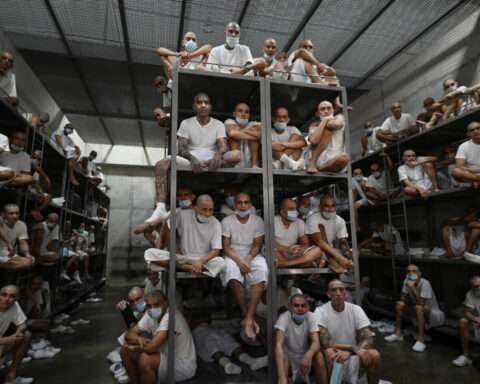That’s how University of Maryland Center for Global Sustainability Director Nathan Hultman describes the virtual summit President Joe Biden is hosting with dozens of world leaders April 22-23.
After four years of disregard for the issue under former President Donald Trump, the summit will be “an opportunity for the U.S. to come back onto the scene to show it is taking climate change seriously,” said David Waskow, International Climate Initiative director at the World Resources Institute, a Washington-based environmental research and advocacy group.
The White House said it will announce an “ambitious” 2030 target for greenhouse gas emissions before the summit.
Advocates are calling for a 50% cut from 2005 levels, a “highly ambitious but still achievable” goal, Hultman said.
And it would show other major polluters that the largest cumulative contributor to global warming is ready to take action.
“Certainly China is looking to see what the United States is going to do,” Waskow said. “We know that some of these other countries — Japan, South Korea, Canada, India — are watching to see how the United States will move.”
Make or break
The stakes are rising. Many experts say the 2020s are a make-or-break decade.
Averaged over the entire globe, temperatures have increased more than 1.1 degree Celsius since 1880. Scientists link the increase to more severe heat waves, droughts, wildfires, storms and other impacts. And they note that the rate of temperature rise has accelerated since the 1980s.
World leaders agreed to limit global warming to “well below” 2C in the 2015 U.N. Paris climate agreement, and to aim for 1.5C.
But the world is currently on track for 3C of warming, which experts say would be catastrophic.
“The global trajectory is completely off track from where it needs to be,” said Rachel Cleetus, policy director of the Climate and Energy Program at the Union of Concerned Scientists.
“We have to sharply bend that curve to keep 1.5 within reach,” she added. “At this point, we are really at grave risk of losing it.”
Global emissions need to fall by about 45% by 2030, according to the U.N. Intergovernmental Panel on Climate Change. By 2050, they need to reach “net zero,” where emissions are canceled out by removing planet-warming carbon dioxide from the atmosphere.
“If you don’t start bending that curve now, the trajectory that one would have to be on following 2030 would be incredibly difficult to achieve,” Waskow said.
Job creator
The Biden administration sees fighting climate change as an opportunity to create jobs — installing wind and solar power, building electric vehicle charging infrastructure and making homes and buildings more efficient, for example.
It’s a cornerstone of his $2.3 trillion infrastructure plan.
“The American Jobs Plan will lead to a transformational progress in order to tackle climate change with American jobs and American ingenuity,” he said, announcing the plan last month in Pittsburgh.
But Congress would have to pass that plan, and Republicans are solidly opposed, especially to the tax increases Biden proposed to pay for it.
South Dakota Republican Senator John Thune called it “a massive expansion of the government financed on the backs of the American taxpayers, with taxes that will hurt the economy and cost us jobs.”
“Until we can sort out those politics, it’s going to be tough for us to claim this leadership mantle internationally on the top-line numbers,” said Joseph Majkut, director of climate policy at the Niskanen Center, a Washington-based policy research institute.
Rebuilding trust
The United States faces skepticism on climate after the Trump administration pulled out of the Paris climate agreement and worked to undo regulations reducing emissions.
“Rebuilding trust is, I think, going to be an essential element of the conversation,” Majkut said.
But the United States is not the only country with a credibility problem.
China, the world’s biggest polluter, made a “world-leading” pledge to get to net zero by 2060, the University of Maryland’s Hultman noted.
It “change(d) the idea of net zero from something that was just for the greenest of the green,” he said, sending a signal to other developing countries that “net zero is actually our global future.”
At the same time, however, China keeps building and financing coal-fired power plants, the single largest source of greenhouse gases. China added enough coal-fired capacity last year to cancel out a near-record amount of plant closures, according to the Global Energy Monitor.
“Right now, they’re barreling forward,” Hultman said. “They basically have to pull back … and even reverse course a little bit in the next few years in order to boost the credibility of their long-term climate promises.”
Eyes will also be on India, a rising source, to announce its plans ahead of a major U.N. climate conference in Glasgow in November.
By Steve Baragona






